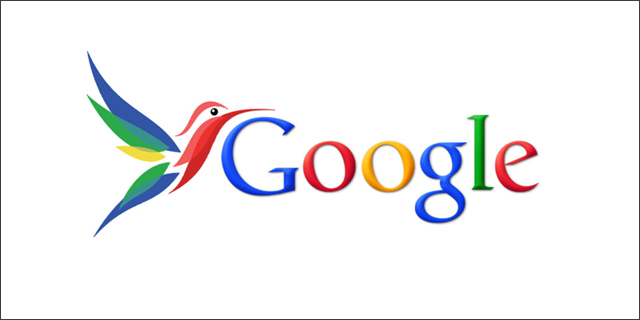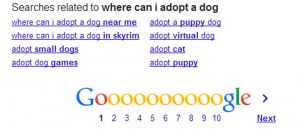
Big changes are afoot at search giant Google, with three big innovations changing the way nonprofits develop their websites and help their clients find them.
Search engines are getting smarter all the time (with the possible exception of Bing) so they can keep up with the way we search. In the early days of search engines, users had to think carefully about their keywords and even then, would sometimes struggle to get a good result. But when was the last time Google failed to give you exactly what you were looking for?
Enter: Google Hummingbird
The latest in the search revolution is Google Hummingbird, an ingenious update that allows users to talk with the search engine. Google is, now more than ever, looking for the intent of your search, not just keywords. So if you have a string of questions, you need not repeat yourself.
Wordtracker has an excellent example here, in which they got the following results:
Show me pictures of Tom Brady
Gives a full page of Google Image search results (who is a quarterback, for those not in the know).
How tall is he
Shows his height, in a box. You don’t even have to click on anything to get the answer because it’s one of the facts Google itself remembers in its Knowledge Graph.
When did he start playing football
Gives a page of links to biographic articles and his Wikipedia page.
The key difference here is that the second and third search terms did not contain the keywords “Tom Brady”. Google gives you this result because it remembers you asking about him. It also uses synonyms and what Google calls co-citations, which is basically when your organization is listed alongside another which the search engine recognizes as being a leader in the field.
Here is Google’s Matt Curtis explaining the rationale behind Hummingbird.
For nonprofits, this is great news. It means your clients are much more likely to find you using a string of related search queries; but it also means you need to make sure your site “answers” the new questions search engines are going to ask of it. Let’s say you work for an animal shelter. Your client may ask of Google the following questions:
Where can I adopt a dog?
Google gives results for some local and national shelters.
What does it cost
As soon as I start typing “what does it cost”, Google suggests I ask “what does it cost to adopt a dog”. This is Hummingbird at work.

To find out what related searches might be used by your clients, try to think through the path they might use to get to your site. It is also really helpful to look at the related searches section at the bottom of the first page of results (but please note: if you’re logged in to any Google products, these searches will be tailored to you).
Want more? The Moz Blog has an amazeballs breakdown of Hummingbird’s impact and opportunities for improvement.
Holy hell, where did my keywords go?
The bad news is that Google has also made all its searches secure. This will make civil libertarians a little happier but it means your Google Analytics account will no longer tell you which keywords are used to reach your website.
Nonprofits are especially vulnerable to this change because they usually don’t have the people-power, money or knowledge to invest in marketers and search engine optimization (SEO) specialists. SEO is a billion-dollar industry based on getting better search performance. Some of their tricks are legitimate, such as improving the way a website is organized or how pages are labelled. Sometimes, SEO is improved through nefarious means, like stacking hundreds of keywords in a website’s code or creating hundreds of links to it from other places so Google thinks the site is popular and therefore pushes it up the top of its search results.
So even though it seems mean that Google Analytics has taken our toys away, it is the best weapon the search giant has against spammers. Nonprofits should actually benefit, if they’re smart, because SEO spammers can’t steal as much of your organic (or unpaid) traffic. The golden rule is: if you have good-quality and relevant content, you should rise to the top of the search results. This is Google’s way of making sure that is more the case.
And you can still make educated guesses at what keywords are driving your traffic. For example, if you look at the paths users take through your website, you can usually work out what keyword they’re using to get there. For example, if you’re running an animal shelter website and 70 per cent of your web traffic goes straight to your adoption page, it’s likely users are using “pet adoption” or its synonym to find your site. SearchEngineWatch has more tips here.
Google has built an interactive infographic to explain how search works. It’s fun and has kittens. Check it out.
Who says?
Google is yet to reveal its much-anticipated Author Rank update but experts reckon it will prioritize verified and well-regarded writers, bloggers and social media accounts over others. How it will judge this is anyone’s guess but it’s likely to use a blend of social media verification (like Twitter’s blue tick) and the number of authoritative sites pointing to your content.
Influence & Co. CEO John Hall told Forbes that Google may use author profiles to work out your authority on a subject, then use that to determine how well your content does in search.
“Google could also use your social profile to gauge how many shares an article has, your individual following, and the authority of the site you’re publishing on,” Mr Hall wrote.
“If you’re consistently publishing quality content on authority sites that relate to your niche, Google may rank your article higher than articles not associated with an author.”
It is vital that nonprofits take advantage of verification programs available and be seen as experts in their field – according to your community as well as Google – lest their role be taken by a for-profit company, or worse.
Social media verification includes:
Twitter verification (aka “the blue tick”)
Facebook page and profile verification
Google Places (for nonprofits with a physical location)
Yelp business claims (yes, we live in a world where people review nonprofits)
Other things that may help with verification:
Links to your web pages from pages talking about the same subject
Links from social media “influencers” in your field
Plain, old-fashioned good-quality content on your website
Those are three key changes that will affect nonprofits this year. I hope this helps. As SEO consultant Stuart Morris recently said at Search Engine Journal:
“Not sure we can feed all the Animals in the Google Zoo but certainly knowing what they like to eat makes it a lot easier.”
Want more?
SEO is a massive challenge and it would take pages for me to explain all the basics. Here is Search Engine Land’s excellent periodic table of SEO, which will give you a good start. And here is a web traffic starter kit developed especially for nonprofits.
Christopher Whalen from Torchbox has some more Google Analytics tricks and tips here.
[slideshare id=29286221&doc=christopherwhalenlatest-131217072027-phpapp02]
Main image: Image: John Tayaban, Flickr